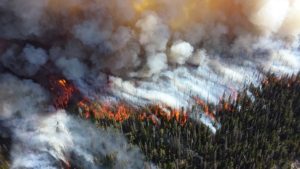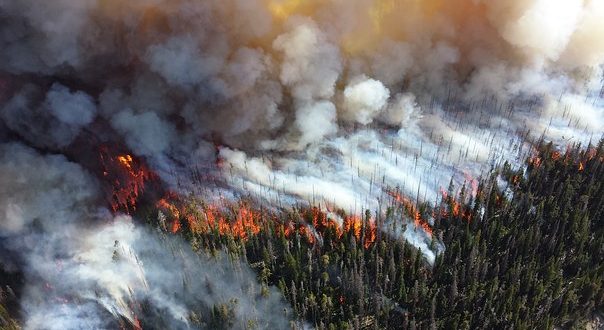Wildfires and Atmospheric Effects
Wildfires have happened since the dawn of time. They can be natural occurrences but have become more of a problem partially due to atmospheric effects.
The Earth’s weather and air pollution mostly remains in the troposphere, which extends from the surface of a plant and up about six miles. This can lift in a severe thunderstorm. During large 
What does this mean for wildfires? What are the atmospheric effects?
Finding Wildfire Particles In New Places
For a long time, scientists believed that the stratosphere only had particles from volcanoes. As more research has gone on, scientists have now found that emissions from wildfires and other smoke issues have been found in this area of the atmosphere. It’s possible for the pyrocumulus clouds to reach 20,000ft over the wildfires.
This type of research can be useful. By understanding past fires, it’s possible that some wildfires could be predicted, especially when it comes to the size and direction.
Affecting Local Air Pollution
However, while there is some benefit, it’s important to touch on the problems with wildfires and the air pollution. The fires will release more carbon through carbon dioxide, which causes respiratory and cardiovascular problems. The inhalation of the smoke particles can also cause breathing and heart problems in the future.
The troposphere has more wildfire emissions and fine particle matter than ever before, leading to an increase within the ozone concentration. This has a knock-on effect through climate change.
During winter months, current atmospheric models suggest that there could be more incoming solar radiation, and that could increase by as much as 15% each year. That means more global warming, more health problems, and more dangers around the world.
While wildfires are naturally and necessary in some cases, the severity and growth where the issue is. Most plants will need three to 10 years between fires to regrow and get ready for the next fire. However, some of these fires are happening annually. They don’t give the plants time to help with the increased carbon dioxide in the atmosphere.
Plus, the destruction of larger forest areas, especially like the Amazon, means that the carbon is going to continue to grow. We need the trees to help protect the environment, so it’s time to do something to help reduce the atmospheric effects.
